T-Mobile G1 Hands-On
The first device to run Google's Android has arrived. The T-Mobile G1 is built by HTC, whose extensive experience building high-end Windows Mobile smartphones is readily apparent in the G1.
First, the basics:
- 3.17" display with the same resolution as the iPhone
- true capacitive touch screen
- WiFi
- 3G data (for T-Mobile USA, Europe, and Asia)
- full QWERTY keyboard
- GPS
- 3 megapixel auto-focus camera
- microSD memory card slot
The display is stunning. It's massive, bright, clear, and displays a huge amount of detail, perfect for browsing web pages.
Naturally, the G1 works in both landscape and portrait modes. Impressively, both orientations are available in nearly every application and screen we could find; landscape mode isn't reserved just for photos, video, and web browsing like on some competing phones.
The touch screen is capacitive, like the iPhone, which makes all the difference in the world. Resistive touch screens on phones like the Diamond, Instinct, and Dare can be relatively frustrating to use. They often require a specific amount of pressure. Even once you adjust to that, drag-to-scroll and flick gestures can be tricky. None of this is an issue on the G1, thanks to the capacitive technology. In trying it hands-on, we're pleased to report that it's every bit as reliable and pleasurable to use as an iPhone.
The touch screen is complemented by a trackball, just like the one on a BlackBerry or Sidekick. In most situations, you can use either the touchscreen or the trackball. At first we were worried that seemed redundant or would lead to confusion. However, after spending some time with it, our fears were put to rest. Some people will prefer the touch screen, while others will prefer the trackball; having that option is great. We suspect that most people will start out using the more-intuitive touch screen, then migrate to the more-efficient trackball over time, switching back to the touch screen for just a few applications where it makes more sense.
WiFi is always a handy feature. In theory, the presence of 3G makes WiFi data less necessary, but T-Mobile has placed some weird restrictions on 3G, such as not allowing music downloads. You'll need the WiFi connection to download purchased music Amazon, for example.
For your basic data needs - such as push GMail and web browsing - the 3G data will come in quite handy, and it is indeed quite speedy, even on a crowded network like the one in New York City. In fact, our test was in a room with about 50 G1s being used simultaneously, so it was close to a worst-case network scenario, and yet T-Mobile's 3G network held up quite admirably, delivering good speeds even doing intensive tasks like Google Maps Street View.
The location system also worked well; it had no problem finding our approximate location quickly. Since we were located under a stone bridge ramp, (it was an unusual venue,) we were not able to test the more precise true GPS functionality.
The microSD memory card slot is very cleverly hidden (and I do mean hidden) into the design of the phone. Once you know where to look, you'll find an easy-to-open rubber cover on the side. The slot is recessed quite a bit, though, so you'll need a long fingernail or some kind of pointy object to push in the card enough to eject it. The early units we tried had trouble automatically mounting the cards; sometimes the phone would act as if no card were inserted even when one was. The OS also has unusual "unmount card" options, meaning the card is not fully "hot-swappable". Much like old versions of Windows and Mac OS, you're expected to manually tell the OS you're going to eject the card before you actually do so. A 1 GB card is included. There is about 50 MB of internal memory, although it seems to be reserved for applications; you can't put music or photos there.
The QWERTY keyboard is quite large, with excellent key spacing. The best part is the unusual swing-slide mechanism of the display when it opens. This clever innovation allows the screen to slide up much further than other messaging-slider phones, making room for a full five rows of keys. The space bar is on its own row accompanied only by shift, alt, and punctuation keys (not intruding into the bottom row of letters) and there is a fully dedicated number row at the top.
Unfortunately, the keyboard is not as good as it looks. The units we tried had relatively poor tactile feel and feedback. The keys were a bit too flat for our taste, with limited travel and "click". It was usable and probably won't be a deal-breaker for most people, but we would have preferred a keyboard that felt better and inspired more confidence that our missives would be complete and accurate. We recommend trying the G1 keyboard in person before purchasing.
The "chin" that angles out at the bottom looks funky, but doesn't get in the way as much as you might assume from photos. We didn't even notice it when typing on the keyboard, something people were worried about before today from seeing only spy shots. The chin has the advantage of making it easier to hold and use one-handed.
Another disappointment is the camera. It lacks video capture capability altogether, and its indoor performance with still shots leaves something to be desired. It's a 3 megapixel unit with true auto-focus, which should (we assume... we hope) provide excellent photos outdoors. But that's not a challenge for most phones. With indoor photos, our informal tests showed quality was excellent when we could hold the phone very still, but the G1's camera is very susceptible to motion blur, so even a little jiggle ruined an indoor shot, even in a room with decent lighting. There's also more delay than average. Even after waiting patiently for a few seconds for the lens to focus, we ruined more than one shot by moving the phone after we thought it was done taking the photo. The screen goes black, and then you still have to hold it still for another second, which is both unintuitive and tested our patience.
In general, the G1 is somewhat large, and somewhat heavy, but it's just small and light enough to avoid being labeled a "brick". For a device with such a large screen, large keyboard, that crazy slider mechanism and so many other features, it's actually impressively compact.
We had mixed feelings on the feel of it. Rich thought it felt good and solid overall, while Eric thought it felt somewhat cheap. Rich would agree that the keyboard certainly felt cheap. The slide mechanism is weird (it's best to watch our video to see how it works) but that part feels solid enough.
The design is also extremely plain and uninspiring. It does match the Google aesthetic, which works so well for the web.... Perhaps that aesthetic just doesn't translate well to hardware. We wouldn't call it "ugly", but "incredibly boring" seems to fit.
We do give the G1 major points for resisting the current trend toward glossy finishes. The matte finish resists fingerprint smudges well.
The G1 has no standard headset jack, only the proprietary "ExtUSB" connector that HTC so stubbornly puts on all of its phones. It is compatible with mini-USB, but to use any kind of standard round-jack headset or headphones, you'll need an adapter. Worse yet, the initial version does not support the A2DP profile for stereo Bluetooth, although that is promised for a future software update.
Here is a short video look at the hardware of the G1:


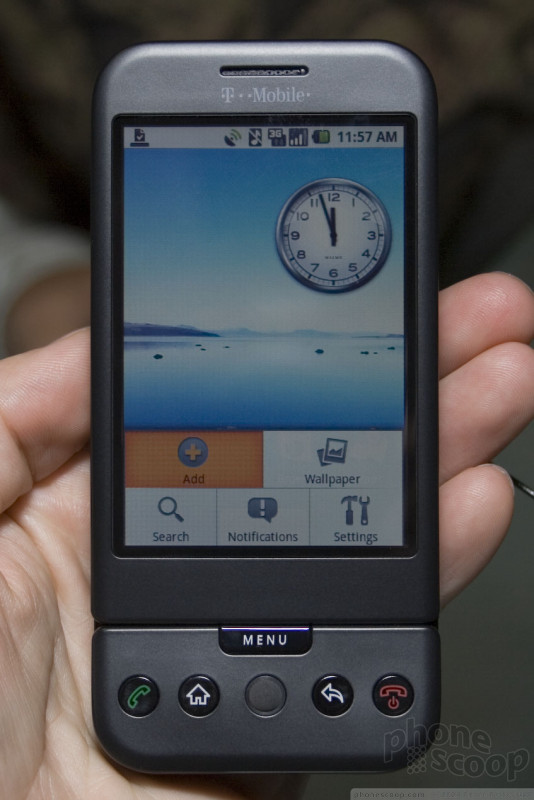



















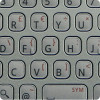 Review: HTC G1
Review: HTC G1
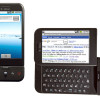 HTC, T-Mobile and Google Announce the G1
HTC, T-Mobile and Google Announce the G1
 Samsung S24 Series Adds More AI, Updates the Hardware
Samsung S24 Series Adds More AI, Updates the Hardware
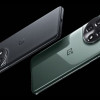 OnePlus 11 Pumps up Flagship Specs
OnePlus 11 Pumps up Flagship Specs
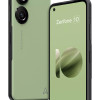 ASUS Zenfone 10 Flagship Keeps it Small
ASUS Zenfone 10 Flagship Keeps it Small
 HTC G1
HTC G1







